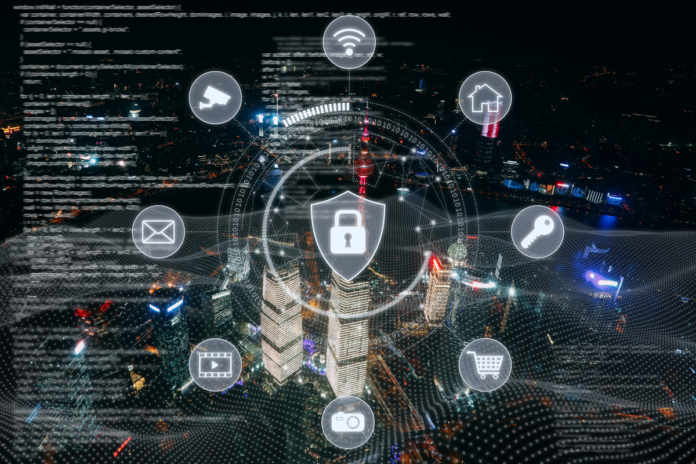Cryptanalysis, the art and science of decoding encrypted messages, has played a pivotal role throughout history, from shaping the outcomes of wars and diplomacy to safeguarding modern cybersecurity. In today’s digital landscape, data security remains paramount, prompting continuous evolution in the field. This article delves into the rich history of cryptanalysis, the emergence of cutting-edge techniques, and predictions that will shape the future of cybersecurity. As the digital world advances, staying vigilant becomes crucial. One innovative solution worth considering is “Immediate iFex AI,” which can assist individuals and organizations in enhancing their cybersecurity measures.
Historical Perspective
Classical Cryptanalysis Techniques
In ancient times, cryptanalysis involved breaking simple substitution ciphers or transposition ciphers. These techniques relied on pattern recognition and frequency analysis, and they were reasonably effective for their time.
Shift Towards Modern Cryptography
The advent of modern cryptography in the mid-20th century introduced more robust encryption methods, including symmetric-key and asymmetric-key algorithms. This shift posed new challenges for cryptanalysts, prompting the need for more advanced techniques.
Emergence of New Wave Cryptanalysis
The term “new wave cryptanalysis” refers to contemporary methods and technologies that have revolutionized the field. This section explores the catalysts behind this evolution and sets the stage for a deeper dive into these new techniques.
New Wave Cryptanalysis Techniques
Quantum Cryptanalysis
Quantum computing is at the forefront of new wave cryptanalysis. Quantum computers have the potential to crack widely-used encryption methods, such as RSA and ECC, by exploiting their inherent vulnerabilities. This subsection breaks down the key elements of quantum cryptanalysis:
- Introduction to Quantum Computing: Quantum computers leverage quantum bits or qubits, which can exist in multiple states simultaneously, providing exponential computational power.
- Threats Posed by Quantum Computers: Quantum computers can efficiently perform integer factorization, threatening the security of public-key cryptography.
- Post-Quantum Cryptography as a Response: Researchers are actively developing post-quantum cryptographic algorithms that are resistant to quantum attacks.
Side-Channel Attacks
Side-channel attacks exploit unintended information leakage from cryptographic implementations, such as power consumption or timing information. This subsection explores side-channel attacks in depth:
- Understanding Side-Channel Attacks: These attacks involve observing physical or environmental factors to infer secret cryptographic keys.
- Real-World Examples of Side-Channel Attacks: Well-known attacks like “Differential Power Analysis” (DPA) and “Flush+Reload” are examined.
- Mitigation Strategies and Countermeasures: Countermeasures like masking, blinding, and secure hardware design are discussed to mitigate side-channel vulnerabilities.
Machine Learning and Artificial Intelligence in Cryptanalysis
The integration of machine learning (ML) and artificial intelligence (AI) into cryptanalysis has ushered in a new era. This subsection investigates the role of AI in cryptanalysis:
- Leveraging AI for Cryptanalysis: AI can accelerate cryptanalysis by automating pattern recognition and attack strategies.
- Enhancing Attack and Defense Strategies: The application of AI for both offense and defense in cybersecurity is explored.
- Ethical Considerations and Challenges: Ethical concerns regarding AI-driven attacks and the need for responsible AI use in cybersecurity are highlighted.
Future Predictions in Cryptanalysis
Quantum-Resistant Cryptosystems
The race to develop quantum-resistant cryptography is intensifying. This subsection delves into the future predictions in this crucial area:
- Promising Approaches and Algorithms: Candidates like lattice-based cryptography and code-based cryptography are examined.
- Deployment Challenges and Timelines: The challenges associated with transitioning to quantum-resistant cryptosystems and potential timelines are discussed.
- Impact on Cryptographic Standards: The implications of quantum-resistant cryptography on existing cryptographic standards and protocols are considered.
Advancements in Side-Channel Attack Techniques
Side-channel attacks continue to evolve, posing a persistent threat. This subsection forecasts the future of side-channel attacks:
- Evolving Attack Vectors: Predictions regarding new side-channel attack vectors and their sophistication are presented.
- Countermeasures and Vulnerability Assessment: Anticipated advancements in side-channel countermeasures and vulnerability assessment techniques are discussed.
- Implications for Secure Hardware Development: The impact of side-channel attacks on secure hardware design is explored.
The Role of AI and Machine Learning
AI and ML are expected to play an increasingly significant role in cryptanalysis. This subsection offers insights into the future of AI-driven cryptanalysis:
- Improved Attack Speed and Accuracy: The potential for AI to further enhance the speed and accuracy of attacks is examined.
- Robustness of AI-Driven Attacks: Challenges and opportunities in making AI-driven attacks more robust are considered.
- Preemptive Use of AI for Defense: How AI can be proactively employed to strengthen cybersecurity defenses is explored.
Ethical and Legal Considerations
Cryptanalysis has ethical and legal implications. This section addresses these concerns:
Cryptanalysis and Privacy
The ethical implications of breaking encryption for surveillance and privacy invasion are discussed.
Cryptanalysis and National Security
The national security implications of cryptanalysis, including lawful interception and state-sponsored hacking, are examined.
Regulatory Frameworks and Responsible Research
The need for ethical research practices, responsible disclosure, and regulatory oversight is emphasized.
Practical Implications
This section provides actionable recommendations for individuals and organizations in light of the evolving cryptanalysis landscape. It explores preparedness, collaboration, and proactive defense strategies.
Conclusion
In conclusion, cryptanalysis is experiencing a transformative phase with the emergence of new wave techniques. Quantum computing, side-channel attacks, and AI-driven cryptanalysis are reshaping the cybersecurity landscape. Preparing for these changes and adopting ethical and responsible practices are essential for safeguarding data and privacy in the digital age. The ongoing battle between cryptanalysis and cryptography underscores the need for continuous innovation and adaptation in the realm of cybersecurity.










